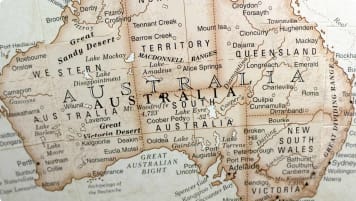Albert Namatjira, painter
These small group tours for senior couples and solo travellers seek to explore history, culture and the landscapes of the Australian outback. Albert Namatjira is certainly the most famous Indigenous Australian of his generation, regarded widely as one of the country’s all-time great artists, based in the West Macdonnell ranges, influenced by the Hermannsburg mission.
27 Mar 21 · 12 mins read
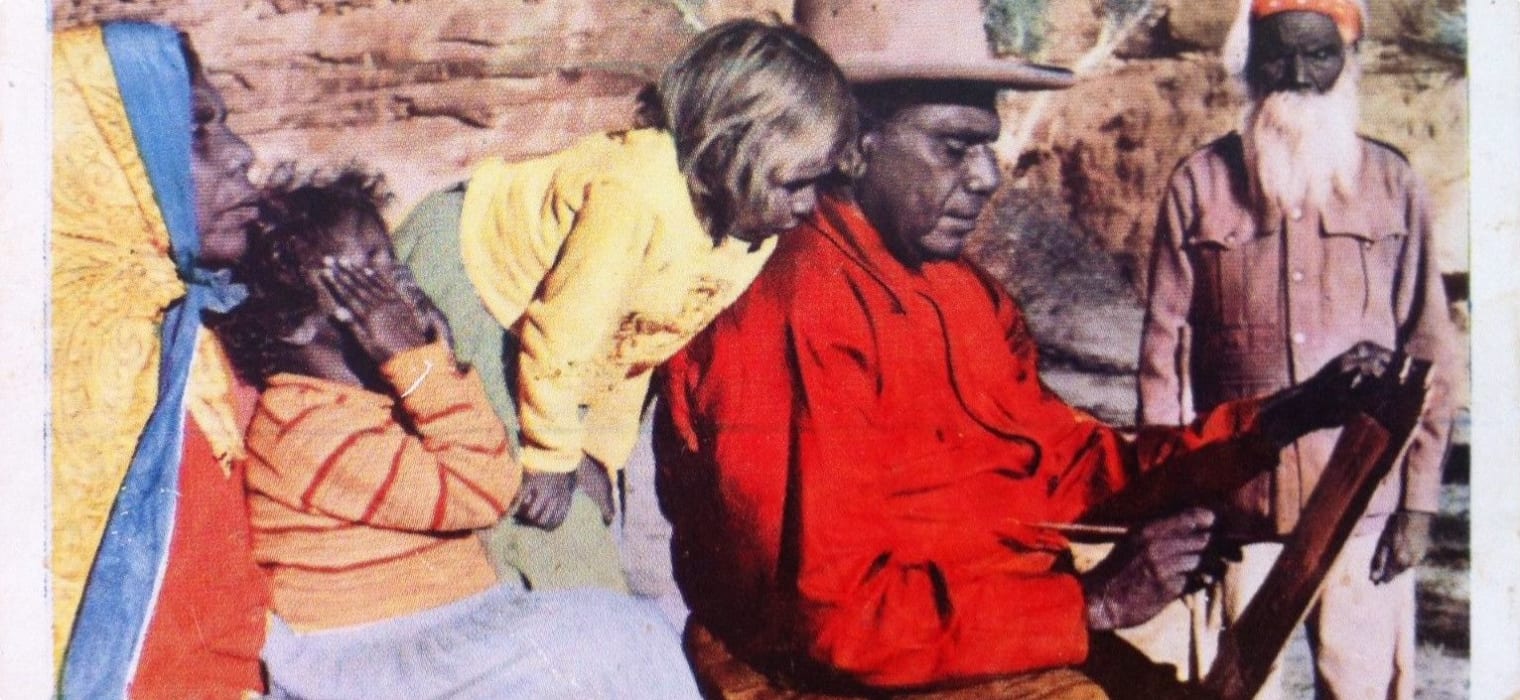
The Red Centre’s Albert Namatjira
Albert Namatjira is certainly the most famous Indigenous Australian of his generation, regarded widely as one of the country’s all-time great artists. A pioneer of contemporary Indigenous art, he was the first Aboriginal to be recognised within a wider Western art tradition. His luminous watercolour landscapes draw from the European style but are imbued with feeling and significance, a recreation of the Country and traditional sites of which he was a traditional custodian.
Namatjira was ever mindful that the ancestors created and were embodied in the Western Desert landscapes he painted, particularly in the towering ghost gums, surrounding mountains, and deep waterholes. By capturing the essence of these ancestral lands, he expresses and reaffirms their custodianship to his people, the Western Arrernte.
His distinctive personal depiction of Country has inspired generations of artists, both Western Arrernte and non-Indigenous, to reflect on the unique desert environment. The Hermannsburg artists who have inherited this this tradition bear testimony to the remarkable achievements of Namatjira and keep his legacy alive today.
This article explores Albert Namatjira’s life, the style and subjects of his artworks, and his legacy. Much of the information is drawn from the National Gallery of Australia‘s Book Albert Namatjira, as well as sources linked to throughout. It is part of a continuing series of pieces on art, ancient landscapes, and Aboriginal settlement of Australia, and is intended as background reading for Odyssey Traveller’s small group tour exploring Alice Springs and Uluru-Kata Tjuta National Park. This 13 day adventure delves into the colourful landscapes and impressive landforms, Aboriginal culture, and rich wildlife of the Southern portion of the Northern Territory, including Hermannsburg and the West MacDonnell Ranges (the home and Country of Albert Namatjira).
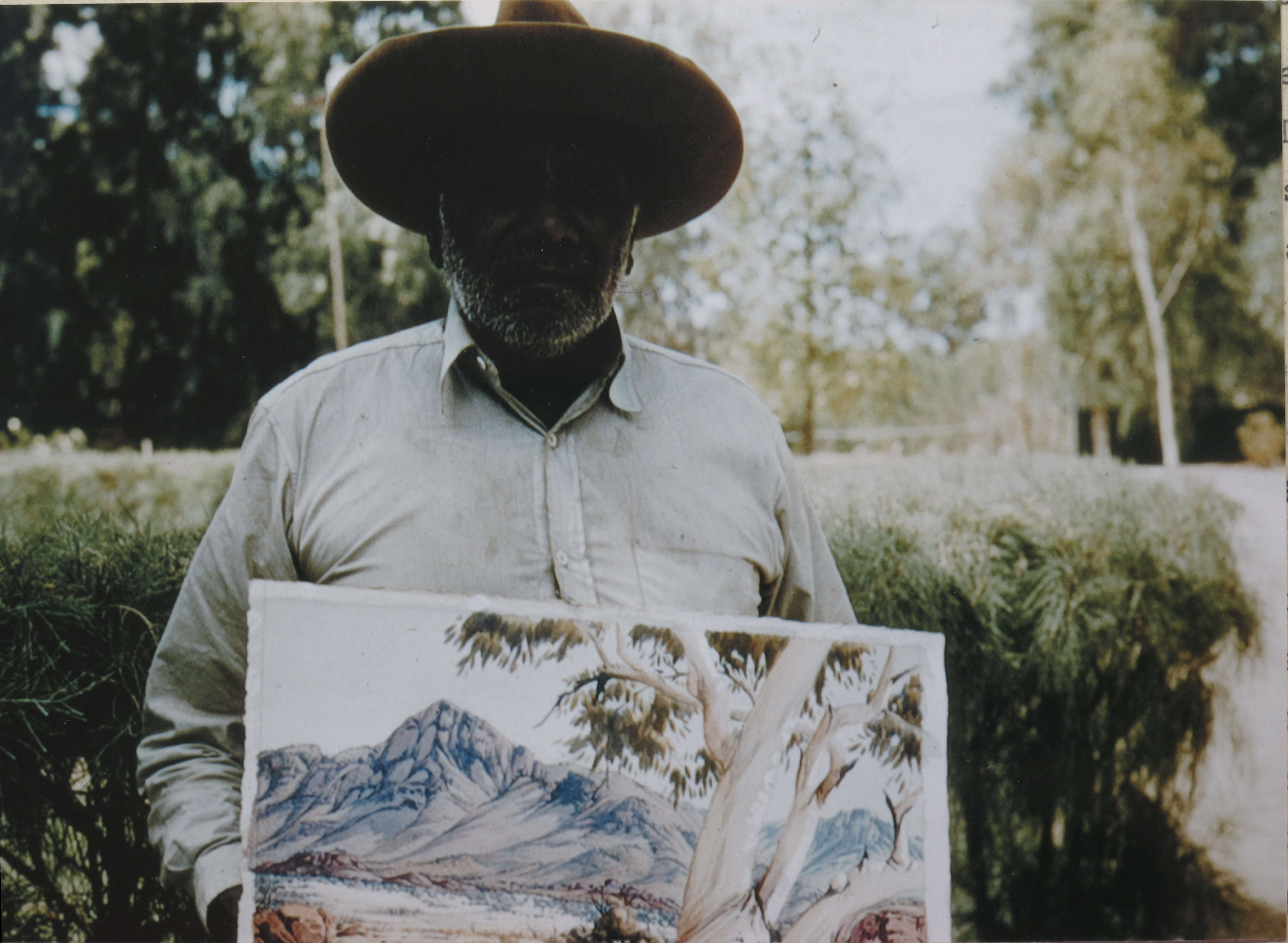
Namatjira’s Life
A member of the Western Arrernte people, Namatjira was born at Hermannsburg (Ntaria) in the Northern Territory on 28 July 1902. His father Namatjira and his mother Ljukuta named him Elea, but he was renamed Albert in 1905 after the family moved to the Hermannsburg Lutheran Mission outside Alice Springs and adopted Christianity.
Mission life contrasted vastly with the lives of Albert Namatjira’s people in the deserts of the Northern Territory. Attending the Hermannsburg mission school as a child, the traditional lifestyle was something he knew little about. This changed at the age of thirteen, as he went through the important Arrernte ritual of initiation. Living for six months in the bush, he was taught traditional laws and customs by tribal elders, which greatly influenced his social worldview and later artwork.
Art had always been an integral part of his life. He began drawing from an early age with pokerwork, burning flora and fauna and Christian motifs onto boomerangs, spear-throwers and mulga-wood plaques sold to tourists. He then later supported his wife, Ikalaita, and growing family by doing odd jobs, including making and selling small pieces of artwork.
However, it was no until 1934 at the age of 32 that he began to paint seriously, under the guidance of Rex Battarbee. Battarbee, along with his friend John Gardner, visited the mission in this year to exhibit their paintings to an Aboriginal audience. They were part of several artists attracted to Hermannsburg and the spectacular scenery of Central Australia, at the time entering the national consciousness as a symbol of Australian identity.
This was the first time the Arrernte people saw landscapes depicting their own surroundings. Seeing them inspired Namatjira to learn how to paint similarly, motivated by his deep attachment to his country and the possibility of a vocation that offered financial return.
Two years later, he volunteered to accompany Battarbee as a cameleer on his two month-long excursions in and around the MacDonnell Ranges to show him good places to paint in exchange for lessons. In this way, Namatjira learnt the techniques of watercolour painting and in exchange taught the older artists about his homeland.
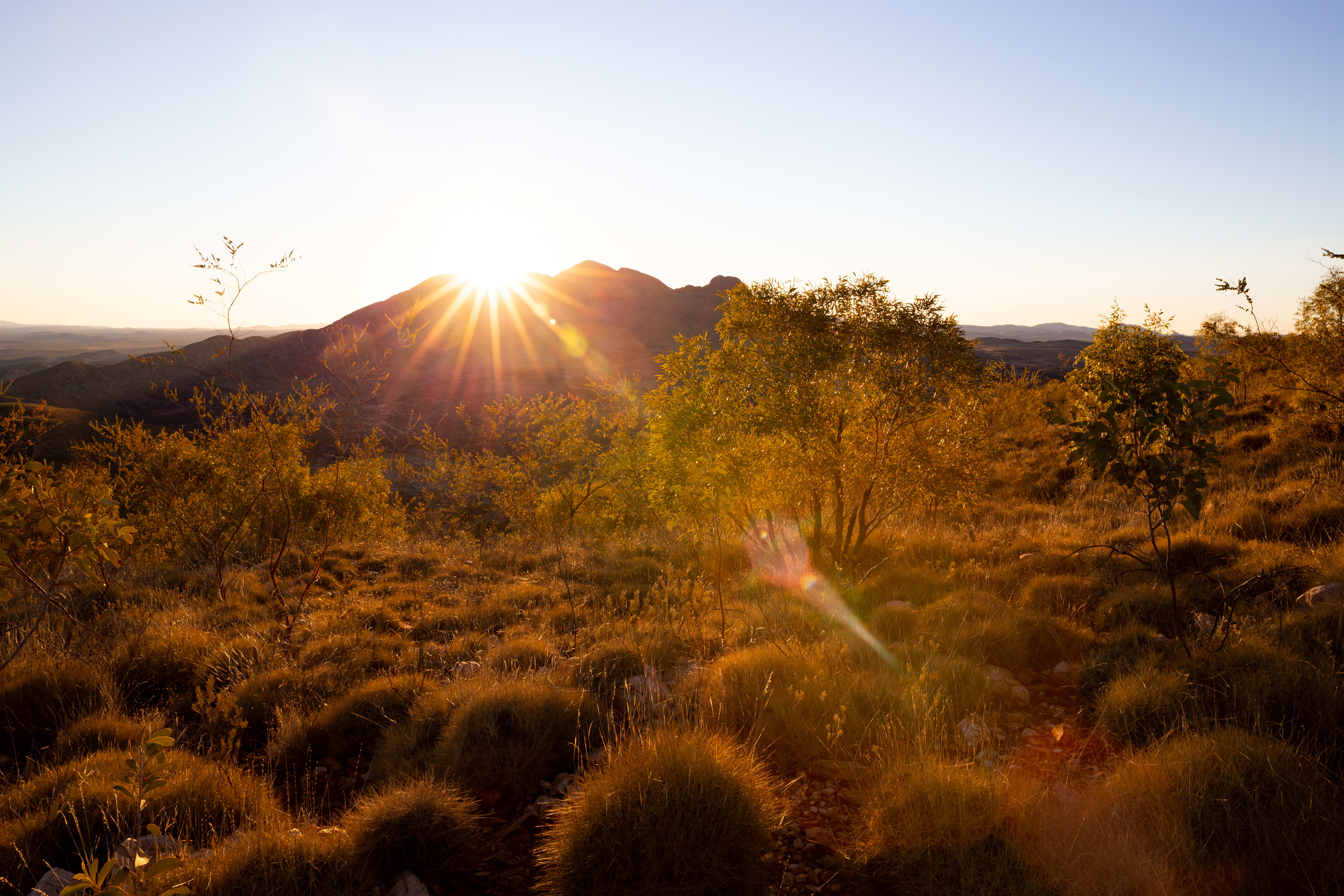
Namatjira had a natural talent and learnt fast. Battarbee first exhibited three of his paintings alongside his own at the Royal Society of Arts Gallery in Adelaide in 1937, and the following year Namatjira had his first solo exhibition in Adelaide. Everything sold out. Subsequent exhibitions in Adelaide and Sydney drew similar enthusiasm and his popularity grew. Soon, private collectors and state and national galleries all sought a painting by him.
However, his success was eventually thwarted by the prejudices of an era in which Aboriginal people were not recognised as citizens of the Commonwealth. He faced restrictions and prohibitions on his attempts to obtain a grazing licence in 1949-50 and to build a house on land he bought at Alice Springs in 1951.
Public outrage at Albert’s predicament pushed the government to grant him and his wife full citizenship in 1957, giving them the right to vote and have limited land rights. They were the first Aboriginal people to achieve these rights, ten years before the government granted similar rights to the rest.
However, the citizenship granted to Namatjira ultimately led to further tragedies. As a citizen he could now also buy alcohol, which he shared with members of his family and friends in accordance with Aboriginal custom. But, as supplying Aboriginal people with alcohol was against the law, in 1958 he was charged and sentences to six months imprisonment.
Following public outcry, Namatjira was released after serving two months of ‘open’ detention at the Papunya settlement in March-May 1959. He emerged a free but broken man, having lost his will to paint and, ultimately, to live. On August 8 that same year he died of hypertensive heart failure at Alice Springs Hospital, survived by his wife, five sons and one daughter. He was just fifty-seven years old.
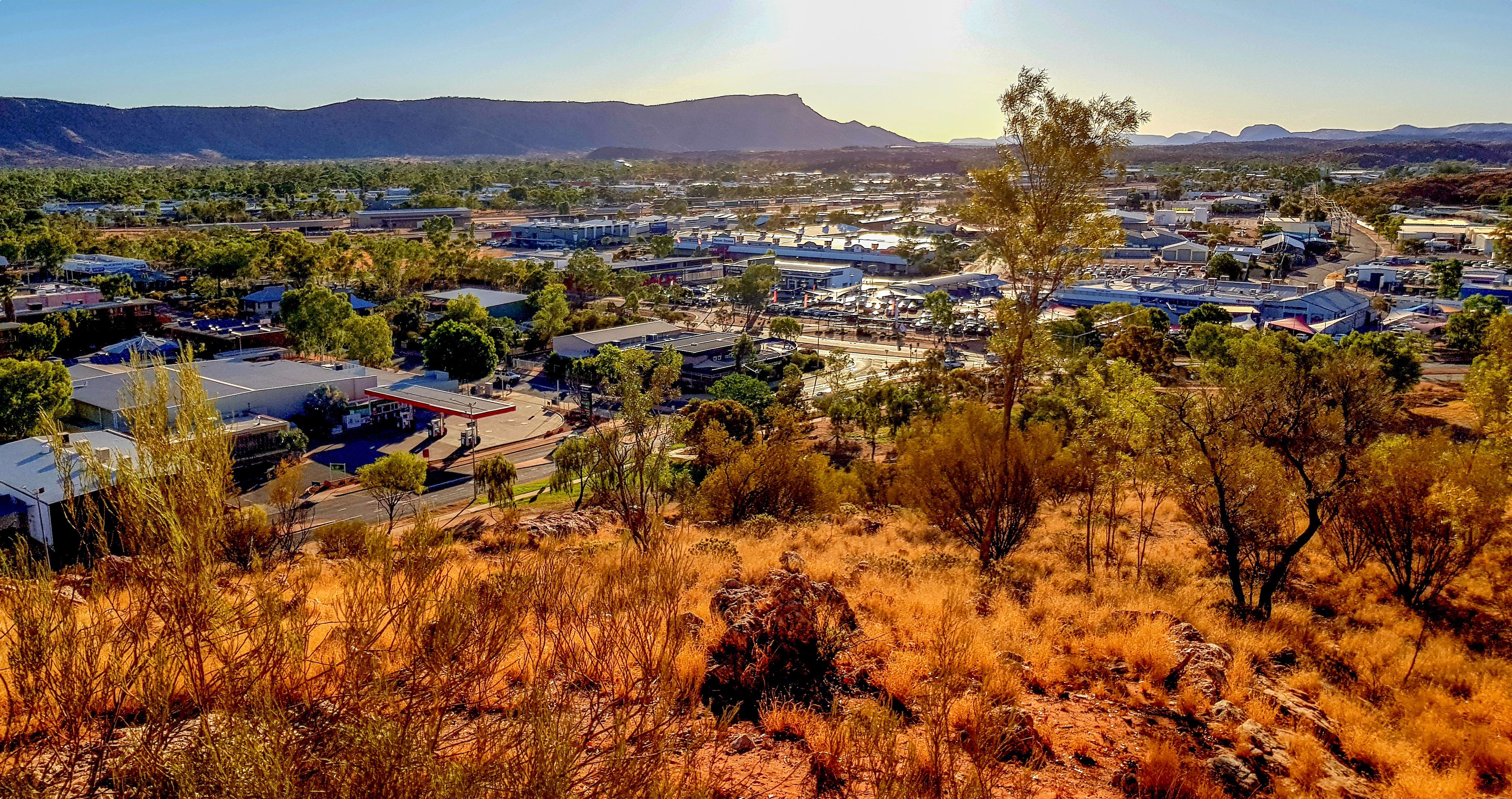
Artwork Style
Namatjira’s artworks are colourful panoramic images depicting the Australian landscape: red mountain ranges that turn purple at dusk, ghost gums with luminous white trunks, blossoming flowers, rolling green hills, barren deserts, and detailed renderings of rocks and cliffs reflecting off water holes. He framed his landscapes within a rectangular format, often with an iconic gum tree placed on either side of the composition to lead the eye to the scene beyond.
His paintings are vastly different from the abstract designs and symbols of traditional Aboriginal art. Rather, the artistic style of contrasting watercolours can be positioned firmly within the Western landscape tradition.
Such a style was denounced soon after his death by some critics as succumbing to European art norms. It was considered a product of his assimilation into Western culture and to ideas of European privilege over the land. This view has however since been largely abandoned, the luminous landscape re-evaluated as expressions of Namatjira’s deep connection with the Western Arrernte Country and sacred sites for which he was a traditional custodian.
Sarina Noordhuis-Fairfax, Kelli Cole and Franchesca Cubillo write that “his subjects are not simply pretty scenes, but sites of ancestral significance that allowed him to fulfil the customary obligation of honouring one’s Country – by painting it”. In doing so, he expresses his personal relationship to ancestral land as well as cultural knowledge passed down over generations through song, ceremony, anecdote, and contact.
Many of his watercolours are an evocation of his parents’ Countries. His father’s ancestral lands lay towards Mount Sonder and Glen Helen Gorge in the MacDonnell Ranges. And his mother’s lay further to the west, depicted in his paintings of the red cabbage palms of Palm Valley, an ancient oasis echoing Central Australia’s tropical history.
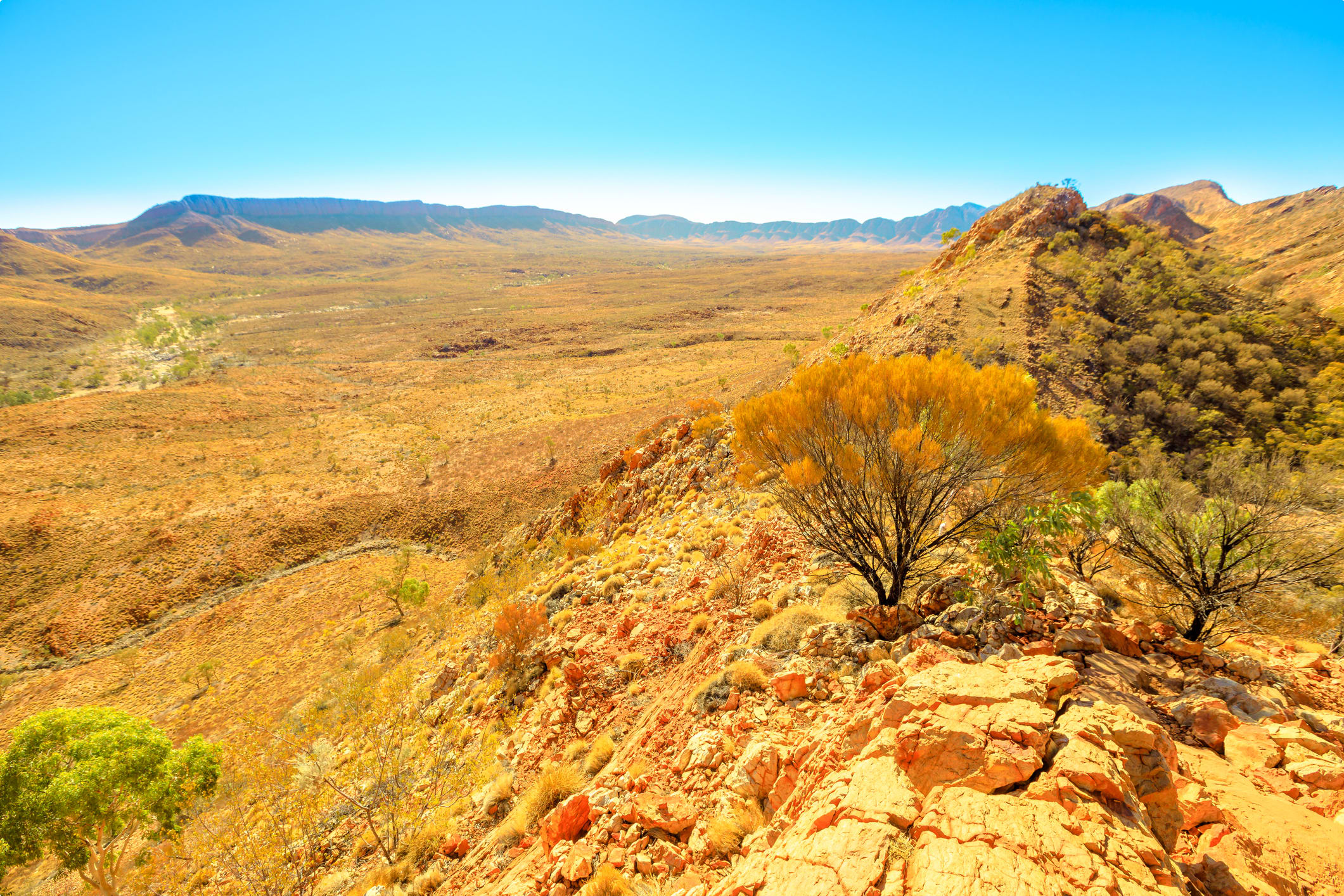
Namantjira’s adoption of a European-style watercolour offers audiences a familiar entry point into this unfamiliar country. However, he does not simply render the Central Australian landscape through a European gaze, but rather imbues his work with feeling for his own Country and ancestral sites.
While Namatjira’s watercolours reflect his mastery of the form and techniques of the Western landscape genre, on closer inspection his practice deviates significantly from the norm. His use of repetition, intricate patterns and high horizons blends both Aboriginal and European modes of depictions. And his luminous use of colour is in stark contrast to the muted Romantic tones of his contemporaries. Powerful reds, ochres and purples make his landscapes glow and come alive, signifying their spiritual and animate presence.
Other landscape artists of this era rendered the unfamiliar and hostile Central Australian landscape as more palatable, a pleasant natural spectacle that could be enjoyed at a distance. For Namatjira, however, this land was his Country, known intimately on both a physical and spiritual level, and so he positions himself and consequently us within the landscape.
Art historians Ian Burn and Ann Stepehen acknowledge his self-conscious effort to push our eyes up into the landscape “to make the scene more real, suggestive of being in the landscape rather than outside, detached and contemplating it”. Horizon lines are raised so high that ravines seem to push up and out of the frame, taking our eyes with them. We are confronted with a feeling of proximity, placed in the midst of almost perpendicular walls of sheer rock faces and heavily eroded slopes of billowing gorges, giving the impression that we are standing at the base of the incredible formations.
Western landscapes sought to define the environment in European terms, removing the presence of Aboriginal people and culture in a visual act of dispossession. The National Gallery of Australia explains that Namtjira’s work is much more than an imitation of this genre. As an Aboriginal artist, he was able to subvert and question the possessive function of the landscape genre, demonstrating the ownership of the lands his peoples had been living on for thousands of years. This was not an act of assimilation, but a display of connection and reclamation.
Key Subjects in Namatjira’s Art
Several subjects are repeated throughout Namatjira’s artworks. The inclusion of ghost gums filling the frame is particularly common. Usually oriented to the left or right of the composition, they occupy most of the shallow viewing space that he invites us to share. The bases of the trees are just discernible, resting slightly above the sheet’s edge, while the highest expanses of their branches are lost altogether, cropped form the frame.
The drastically cropped composition of these ghost gums have led scholars to interpret them as bearing anthropomorphic qualities, the paintings described more as portraits than landscapes. Alison French writes: “Trunks become torsos, branches arms. Bark functions for a tree in the same way as a skin does for human beings — folds and wrinkles are created by internal pressures of growth.” Magnificent, enduring, and reliant, they function as metaphorical portraits of ancestral totemic beings standing guard over sacred sites.

Depictions of waterholes are also common. Glass-like pools are surrounded by vast escarpments or corrugated rock formations. The depth of the water is unknown, the surface of the water a mirrored reflection.
Rain in the desert regions of Central Australia constantly fluctuates in the extremes and is both dangerous and life sustaining. As a result of these torrential downpours many creeks, rivers and waterholes fill and overflow, helping to form the various gorges and chasms that are part of the MacDonnell Ranges. These waterholes are protected spaces, home to the Rainbow Serpent, and are therefore significant Aboriginal sites.
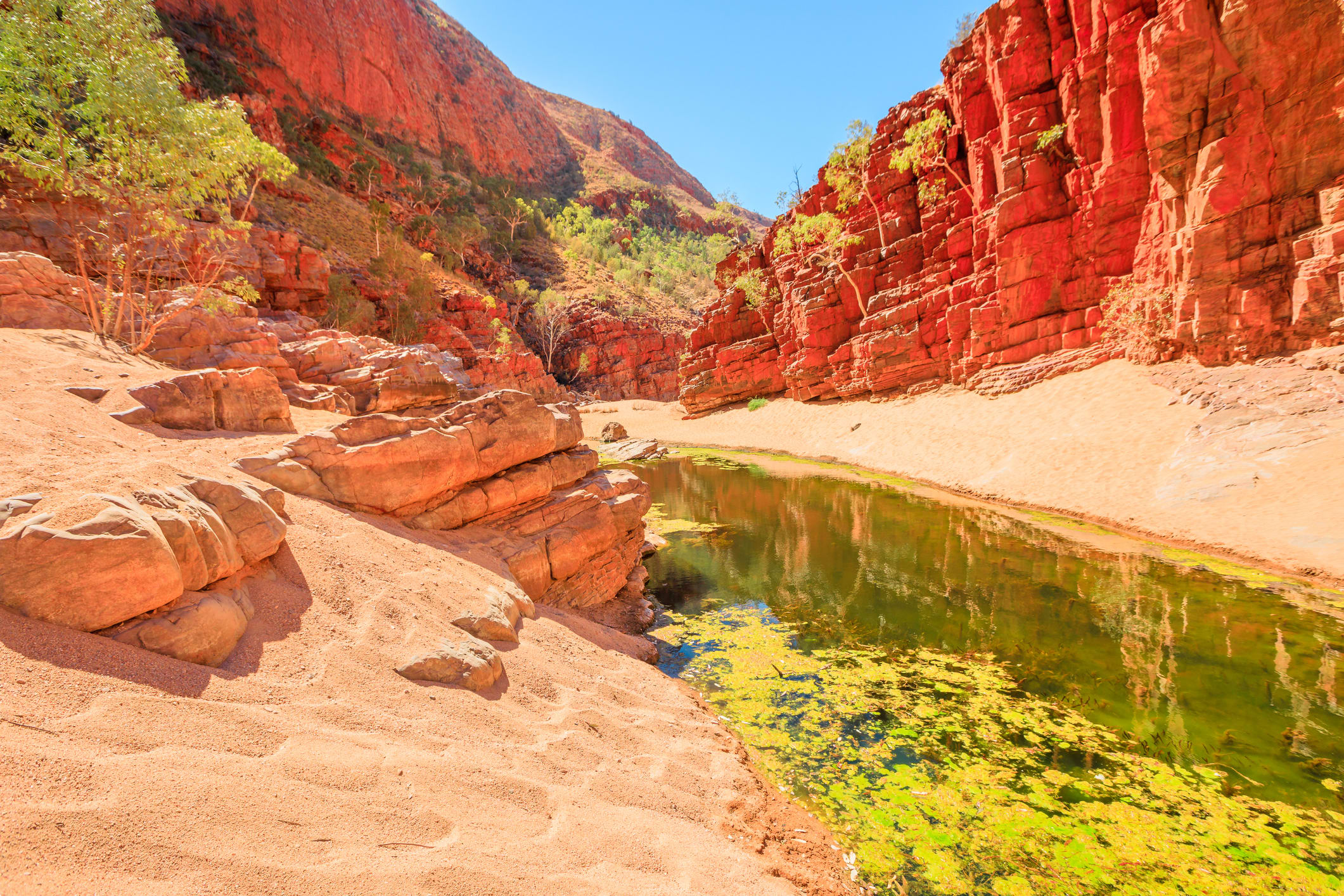
The Palm Valley – an arid landscape dotted with spring-fed pools that support unique flora – also features as one of Namatjira’s most popular subjects. He was intimately connected to this land, his mother’s Country, for which he inherited the status of kutungula, or manager. This was a significant relationship, just as important as the right to own your father’s Country under Western Arrernte law.
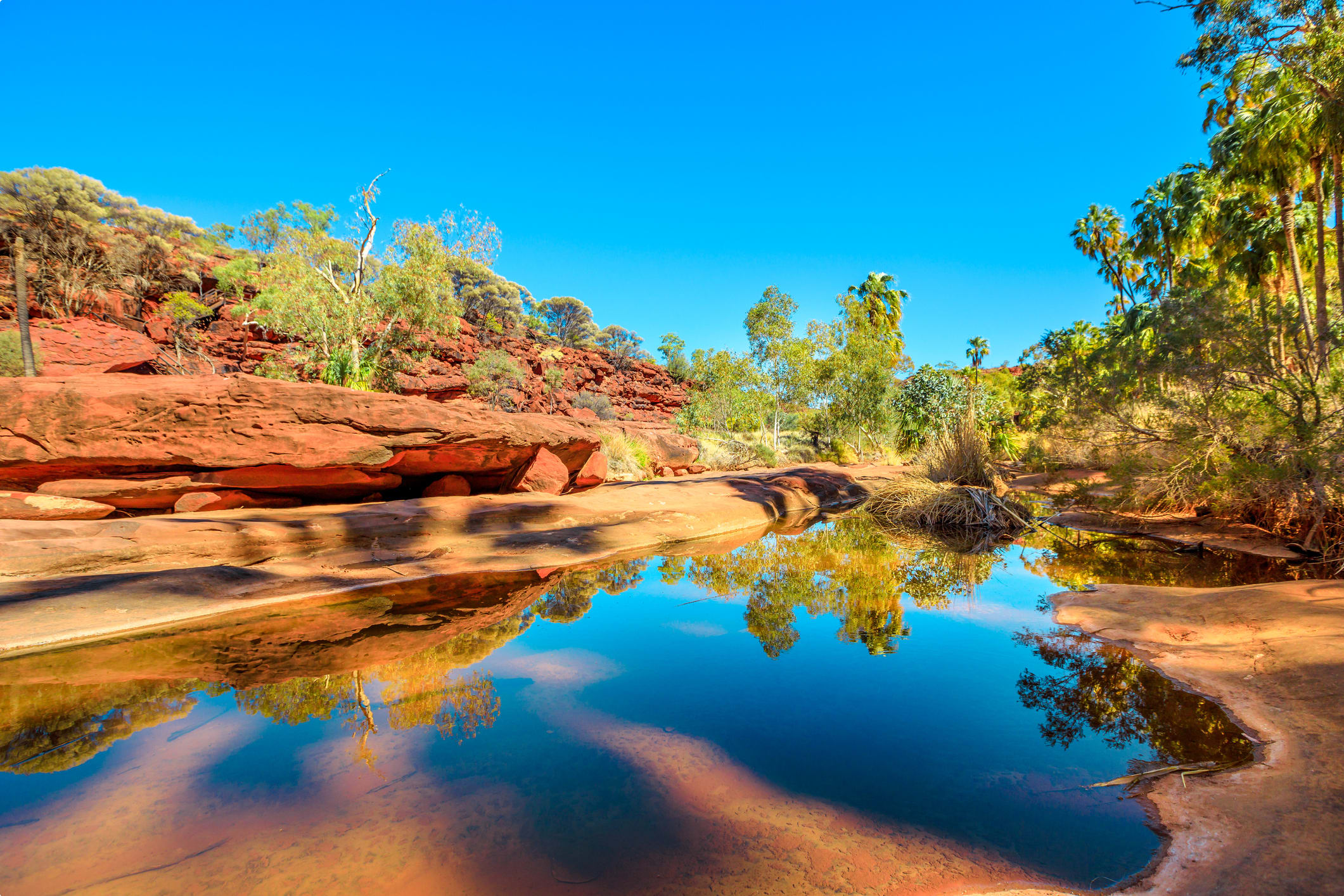
Namatjira’s Legacy
To this day Namatjira remains the most famous Australian Aboriginal of his generation as the pioneer of Indigenous Australian art and a fighter for Aboriginal rights. A prolific artist, it is estimated that he completed around 2000 paintings during his artistic career, with much of his work now on public display in some of Australia’s major art galleries. For his achievements, he was awarded the Queen’s Coronation Medal in 1953, elected an honorary member of the Royal Art Society of New South Wales in 1955, and honoured with an Australian postage stamp in 1968.
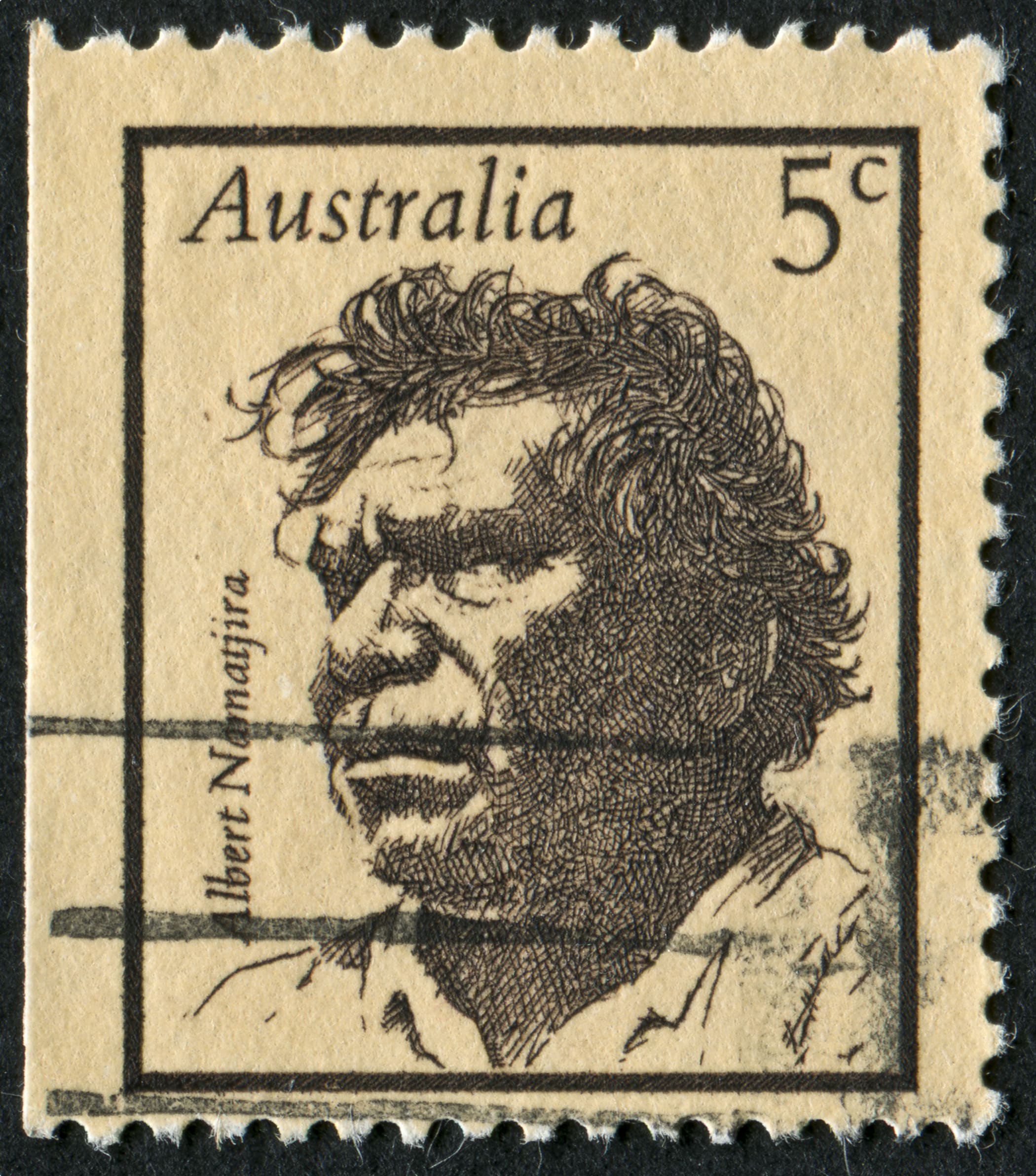
The National Gallery of Australia describes his impact:
“Through his paintings he brought central Australia, and particularly the country of the Western Arrarnta, to a largely eastern seaboard-based Australian population that had had little contact with or knowledge of Indigenous art. The extent of Namatjira’s watercolours—whether resplendent or evanescent—challenged non-Indigenous peoples’ misconceptions of a lifeless inland desert by depicting the flora and ancient geography in an ever-changing palette of tone and light.”
In doing so, he acted as a cultural ambassador, navigating through a social-political environment that was both foreign and unknown to most Indigenous people to create some of the first bridges between Aboriginal and western cultures. His art made an impact at a time when Aboriginals in Australia had very few human rights, and in many ways it helped to pave the way for their recognition as citizens.
Namatjira’s legacy continues today through the Hermannsburg school of painting. A fourth generation of Central Australian Indigenous artists keep the tradition alive, exhibiting and selling beautiful works, all based in Namatjira’s traditional lands of the West MacDonnell Ranges. Paintings are now done not only in watercolour on paper, but also on ceramic pots and tiles and in acrylic on canvas.
Click here for a gallery of Albert Namatjira’s paintings.
Tour of Central Australia
Odyssey Traveller visits the homelands of Albert Namatjira and various sites of cultural significance during our 13-day tour of Alice Springs and Uluru-Kata Tjuta National Park. During this tour we delve into the colourful landscapes and impressive landforms, Aboriginal culture, and rich wildlife of the Southern portion of the Northern Territory.
We begin and end at Alice Springs, where we learn about its surrounding beautiful desert landscapes, Aboriginal culture, and unique wildlife. Alice Springs, or simply ‘Alice’ as it is known now colloquially, is famous for the ochre sands and mountain ranges that surround it, its many Aboriginal art galleries, and cultural events. The Arrernte people, who have lived in the Central Australian Desert in an around what is today Alice Springs for thousands of years, still today sustain a strong connection to this land and a rich culture.
We spend four nights in Alice Springs, before making our way to enjoy the various sites and wildlife of the national parks in the southern portion of the Northern territory. The UNESCO World Heritage Uluru-Kata Tjuta National Park is a major highlight as we explore two of Australia’s most magnificent geological and landform features: Uluru (Ayers Rock) and Kata Tjuta (the Olgas). Both Uluru and Kata Tjuta have sacred significance to the Anangu, the local indigenous people who have inhabited the land for more than 22,000 years. They believe both sites contain spirit energy, with the surrounding areas the home of their ancestors and inhabited by many ancestral ‘beings’. The park is also home to a fascinating array of plants and animals, including many rare species.
Other key highlights along the tour include trips to the spectacular canyons of Watarrka National Park, Finke Gorge National Park (home to a diverse range of rare plant species), the Aboriginal Community of Hermannsberg (once home to Albert Namatjira), and the outstanding landscapes of both the West and East McDonnel Ranges (ancient landscapes sculptured over time by climatic elements and today refuges for many plants and animals).

Travellers with an interest in learning more about the Aboriginal heritage of Australia may want to check out our various other outback Australia tours.
These include visits to:
- Archaeological sites including the Madjedbebe rockshelter and the extensive collection of ancient Aboriginal rock art at Kakadu National Park as part of our tour of Kakadu and Darwin
- The ancient indigenous sites including Lake Mungo and the Budj Bim Cultural Landscape as part of our tour of the Southern States of Australia;
- The important cultural site of Wilpena Pound on our tour of the Flinders Ranges;
- The ancient rock art in the Kimberley, Western Australia;
- The Brewarrina Fish Traps in outback Queensland;
Every Odyssey guided tour is designed especially for mature and senior travellers, who want an authentic and informed experience of their destinations. Our tours aren’t the typical tourism Australia holiday – Blue Mountains, the Great Barrier Reef, and the penguin parade on Port Phillip Island. Instead, we pride ourselves on getting of the beaten path and making you think about Australia and New Zealand in new ways. We move in genuinely small groups – usually 6-12 per tour – and all tours are cost-inclusive, encompassing accommodation, attraction entries, and transport. For more information, click here, and head to this page to make a booking.
Articles about Australia published by Odyssey Traveller:
- Aboriginal Art
- The Kimberley: A Definitive Guide
- Uncovering the Ancient History of Aboriginal Australia
- Aboriginal Land Use in the Mallee
- Understanding Aboriginal Aquaculture
- Mallee and Mulga: Two Iconic and Typically Inland Australian Plant Communities (By Dr. Sandy Scott).
- The Australian Outback: A Definitive Guide
For all the articles Odyssey Traveller has published for mature aged and senior travellers, click through on this link.
External articles to assist you on your visit to Central Australia
Related Tours

days
Apr, Jun, Aug, Nov, Mar +2Exploring Alice Springs and Uluru-Kata Tjuta National park by Motorbike
Visiting
Explore on a Motorbike tour in the Outback and learn about historic Alice Springs, The MacDonnell ranges, and Uluru-Kata Tjuta national park. This escorted small group Motorbike tour for mature and senior travellers, travelling as a couple or solo travellers also visits the Hermannsburg Lutheran mission plus Henbury meteorite site learning about the Aboriginal outback and contemporary art.

days
Apr, May, Jun, Jul, Aug +3Small group tour exploring Alice Springs and Uluru-Kata Tjuta National Park
Visiting Northern Territory
Explore and learn about historic Alice Springs, The MacDonnell ranges, and Uluru-Kata Tjuta National Park. This escorted small group tour for mature and senior travellers, travelling as a couple or solo travellers also visits the Hermannsburg Lutheran mission plus Henbury meteorite site learning about the Aboriginal outback and contemporary art.

days
Jun, Jul, Sep, Feb, Mar +1Darwin and Kakadu small group tour
Visiting Northern Territory
Explore and learn as part of a small group tour for seniors on this package tour to Darwin and Kakadu National park, a UNESCO world heritage site. This program also visits Arnhem land. Our focus is on ecology, landscapes and history on this 14 day program in the far north of the Northern Territory.
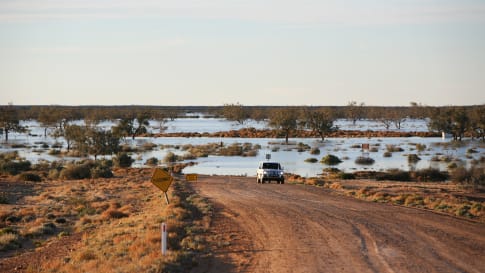
65 days
MarLong tour of Australia for a small group
Visiting New South Wales, Northern Territory
Small group tour for senior couples and solo travellers touring Australia. Travelling through the outback and visiting many of the famous sights as well as off the beaten track locations. Learn about the history of the people who explored the deserts, from indigenous communities to Europeans, as well as Burke and Wills, visit White Cliffs, Marree and far north Kakadu and the Kimberley.
From A$48,995 AUD
View Tour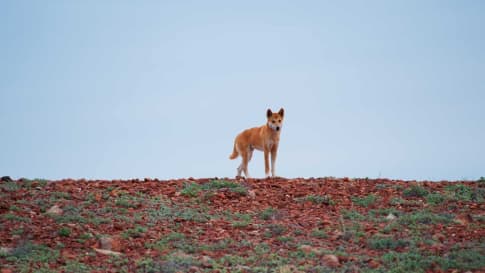
days
Apr, May, Jul, Aug, Oct +2Small group tour of Australia's Flinders ranges
Visiting South Australia
Escorted small group tour of the Flinders range in South Australia from Adelaide. Learn about Coober Pedy, Wilpena pound and water system of Lake Eyre as we explore and learn also about the history of the people who explored the Flinders.

days
Mar, May, Aug, Sep, Oct +2Small group tour of World Heritage sites and more in the Southern States of Australia
Visiting New South Wales, South Australia
Discover the World Heritage Sites of the southern states of Australia travelling in a small group tour. A journey of learning around the southern edges of the Murray Darling basin and up to the upper southern part of this complex river basin north of Mildura. We start and end in Adelaide, stopping in Broken Hill, Mungo National Park and other significant locations.
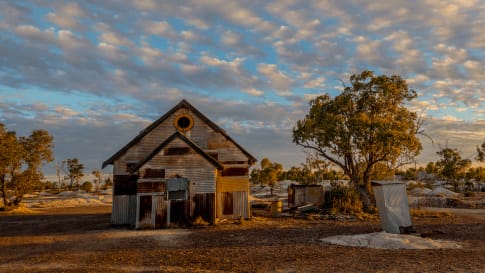
days
Mar, Apr, May, Jul, Aug +2Small group tour of outback Queensland
Visiting New South Wales, Queensland
To Dubbo and back, this small group tour takes you to learn about the Brewarrina fish traps, we travel high up into North Queensland to see the Dinosaurs of Winton and incredible Aboriginal rock art at Cathedral gorge and learn about opal mining and the history of Lightning ridge.

13 days
May, Jun, Jul, Aug, SepSmall group tour of Australia's Kimberley
Visiting Western Australia
Escorted small group tour of the Kimberley. We explore and visit The Bungles, Bell Gorge, Mitchell plateau & Halls Creek in the dry season. Amazing landscapes intertwined with Aboriginal communities resident more than 45,000 years.
From A$15,390 AUD
View TourArticles

Aboriginal Art
Senior and mature couples and solo travellers remain curious but often informed about the role Aboriginal art plays in the indigenous community and the various styles. This article seeks to provide a platform for this collection of small group tours of upto 15 people into the Australian outback where often Aboriginal art styles are encountered.
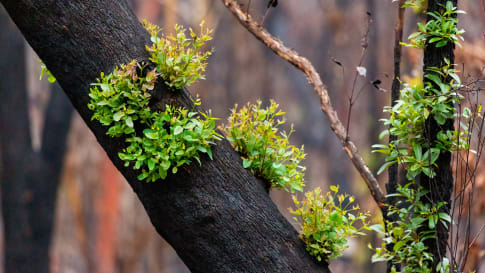
Aboriginal Fire Management
Small group tours for mature and senior travellers in the Australian outback to learn and appreciate land management techniques for couples and solo travellers reflecting Aboriginal culture in Kakadu, Tasmania, Arnhem land and the Kimberley.

Aboriginal history and culture of Kakadu National Park, Northern Territory
For those seek to learn as they travel then the history of the Aboriginal journey and timelines that unfold as a discovery in Australia seek to fascinate the mature and senior traveller on a small group package tour for couples and singles. From Darwin, this tour also visits Arnhem land as well as Kakadu, during the dry season.

Aboriginal Kinship systems
Article about Aboriginal kinship to assist small group tours in Australia understanding Ancient aboriginal society and the contemporary view. Kinship influences the relationships including aboriginal trading routes.

Aboriginal Songlines
Songlines trace the journeys of ancestral spirits who created the land and all natural phenomena. The creation stories as well as practical knowledge needed for survival in outback Australia. We experience this knowledge on our small group tours into Outback Australia.
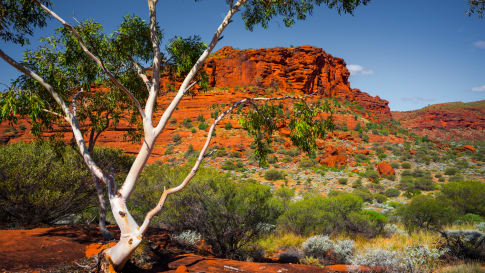
Alice Springs, Australia
Explore the sights and history of Alice Springs, with its amazing Indigenous art, rugged early settlement, and dramatic natural landscapes, Alice Springs is one of the Northern Territory's most popular highlights. Odyssey offers small group tours for mature and senior travellers, couples, and solo travelers to Australia and the Northern Territory.

Ancient Aboriginal trade routes of Australia
Ancient Aboriginal trade routes of Australia Trade was a central part of life for Aboriginal people prior to the British settlement of Australia. Trading routes criss-crossed the nation, dispersing goods, information, technologies and culture thousands…
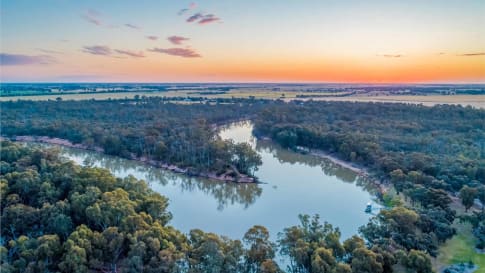
Appreciating Australian River Systems
Appreciating the linking of the river network into the Australian, history, culture and landscape on a small group tour for mature and senior travellers of couples or solo travellers is an integral part of understanding the continent of Australia and Aboriginal settlement.
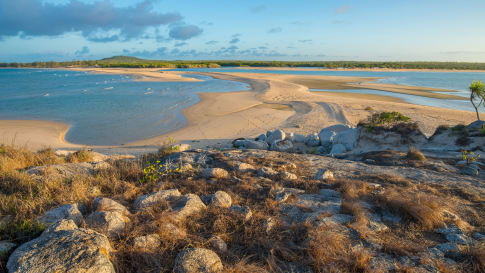
Arnhem Land, Northern Territory
To enter Arnhem land a permit is required for visitors. Explore and learn about the Aboriginal community in Arnhem land as part of a small group package tour that includes Darwin and the Kakadu. These are small group tours of upto 12 like minded mature and senior travellers, couples or solo travellers interested in exploring as they tour.

Contemporary Aboriginal Paintings
Article introducing contemporary aboriginal art to mature and senior travellers taken a escorted small group tour into Outback Australia's Northern Territory, Kimberley, Queensland, New South Wales or South Australia seeking to learn about Aboriginal history and culture.
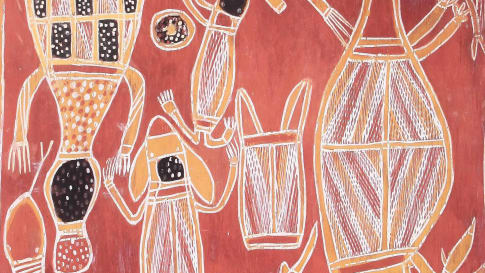
Milingimbi Art
Milingimbi art, studied and discussed on a small group tour for mature and senior travellers interested in history and art. Milingimbi is one of a number of different acclaimed art styles of the Aboriginal community history.

The Australian Outback: A Definitive Guide
Explore learn and consider what is the outback in this article. For mature and senior travelers considering joining a small group package tours into the outback to see, learn and explore about this unique place, not only the landscape but the Aboriginal approach to living. On each of the tours for couples and the single traveler you learn something different but fascinating, from Outback Queensland, the Flinders, Broken Hill and the Kimberley and the wildflowers all contribute to this question, what is the outback?

